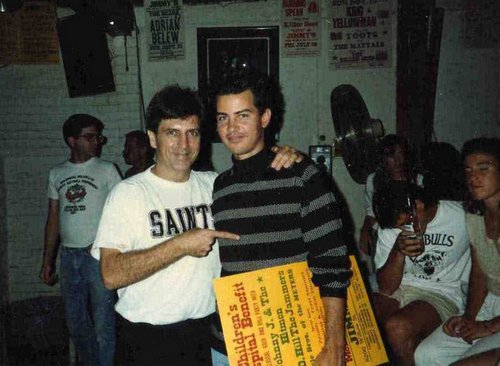
Jimmy Anselmo and Vance DeGeneres, bassist for The Cold. (submitted photo)
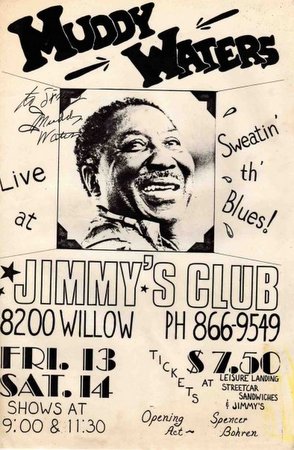
(submitted photo)
For many months, Jimmy Anselmo has been trying to get the New Orleans City Council to allow him to open Jimmy’s Music Club again at the historic location on Dublin and Willow Streets, across from the streetcar barn, but his application has been buried. The more I look at the issue, the more it seems like a simple lack of communication might be the main impediment. I feel confident there would be few objections to Jimmy reopening his club if all concerned were provided with just a little background history on Jimmy and his club, which I will deliver from a personal perspective.
First, I want to tell you about something beautiful. The most repeated observation about our early punk rock and New Wave scene in New Orleans is that nobody noticed it in the deep shadow of jazz and rhythm and blues, but it was my scene. As the son of New Orleans jazz author and raconteur Al Rose, I grew up with jazz, but I was ready for something new, and when I first heard punk rock, I quickly discovered the scene in New Orleans. Jimmy’s booked all kinds of music, but as one of the only two clubs in New Orleans to regularly book punk and New Wave, Jimmy’s figured prominently for us. I want to call it an underground scene, but it was not hidden, just ignored, though that did not stop us. There was a certain freedom in the knowledge that only those involved cared, and the punk rock and New Wave scene we collectively created in the cultural bubble of New Orleans at the end of the ‘70s was vital, fun, and the only scene that mattered to me. But, like the lost energy of my youth, it faded as we all seemed to move in different directions. We had better things to do, I suppose, but nothing ever really seemed as much fun. Insert more maudlin nostalgia here.
Fast forward about 30 years: A Delgado film student by the name Al Champagne announced that he would make a documentary on our scene, focusing on the period between 1978 and 1982. Most of us had not imagined that anyone else knew there had even been a scene here, but Champagne had started a Facebook group to hopefully locate a few people to interview about it. To Champagne’s surprise, the group grew to 2000 members almost overnight, with everyone joking, gossiping, bickering, reminiscing, and mourning late friends. Poor Al Champagne must have felt a little overwhelmed when all these old punks 30 years his senior, who already spoke their minds far too freely even before they were too old to care what anyone thought, opened the spillway of information on him.
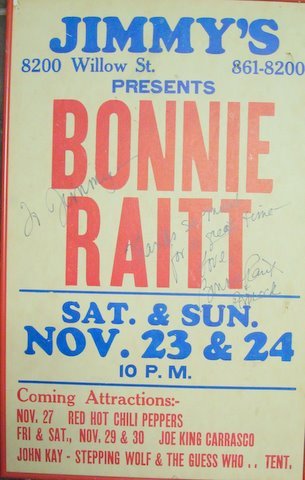
(submitted photo)
In the afterglow, some of the old bands decided to stay together and keep gigging, and many of us have since decided to finally return to New Orleans. It was a night of good feelings, free of the youthful angst that kept us from realizing we were a big family all along. Imagine how happy we were when Jimmy decided to open Jimmy’s again at the historic location, no less, where he and so many of us had spent some of the best times of our lives.
When we all learned that Jimmy’s reopening was being blocked by a liquor permit moratorium that the Council had imposed, however, the general knee-jerk reaction was disbelief — then head shaking, then disgust, and finally righteous indignation.
The Council’s position remains that they have with great effort established a fair system of real rules that everyone must follow equally — that there is a protocol, and Jimmy can and must go through the process just like anyone else. We will put aside the particulars of the procedural issue, as the extension of the moratorium for so long seems in itself illegal on its face. The notion that the council’s by-the-book stance on Jimmy’s application is motivated by fairness alone, therefore, rings a bit hollow. On the other hand, we should not devalue the new renewal and vitality of Carrollton and should not be surprised if a few eggs were broken in New Orleans politics to make this omelet.
The neighborhood organization certainly has legitimate concerns. The previous operator in the building that used to house Jimmy’s was called the Frat House, and like the name might presage, it ran afoul of the neighbors. In fact, Jimmy Anselmo, who still owns the building, also complains about the Frat House operators. If Anselmo is allowed to do business again, however, he would have his name on Jimmy’s again and would certainly not allow a Frat House situation to repeat itself. The resurrection of Jimmy’s will involve not only Jimmy Anselmo as consultant, registered manager, and face of the club; it will also in a similar capacity involve Gary Quaintance, a retired NOPD officer whose duties included liquor license enforcement. Quaintance is also the co-founder of the Carrolton Station, directly across Dublin Street from Jimmy’s. He and Anselmo have known one another for three decades, and Quaintance’s son-in-law and his partner plan to lease the building from Jimmy and restore the club under the tutelage of both Quaintance and Anselmo. At the recent 2012 New Orleans Punk Rock and New Wave Reunion, this time a two-night extravaganza, everything went beautifully at the historic location, with no complaints from anyone. And it was beautiful again.
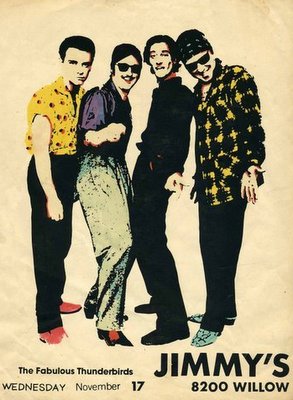
(submitted photo)
Jimmy’s core of supporters also feel a great emotional connection to a different time, when we checked the listings in the Wavelength, an actual paper magazine, bought our actual vinyl records at Leisure Landing and Metronome, and then went to Jimmy’s or Jed’s in the evening. The emotional identification many of us feel for Jimmy’s should not be underestimated. Keeping it closed seems a little like preventing fire trucks from responding to the Hubig’s fire. Imagine if someone decided to bring back Morgus the Magnificent to regular production, but someone killed the deal by claiming the show needed to be studied for its effects upon the youth. Imagine if K&B wanted to buy out Rite Aid, but someone stopped the deal over vague concerns about antitrust issues. We should understand support for Jimmy’s in such terms. We view Jimmy’s as a vital signpost of our cultural identity.
Nonetheless, what longtime residents do not grasp fully is that many of those new to the neighborhood are not differentiating Jimmy Anselmo from other operators because the new residents were simply not here when Jimmy’s was open. Neighborhoods take time to coalesce after an upheaval, and it seems people just do not know one another very well yet. Longtime residents can certainly help with this perception problem by sharing the history with their newer neighbors. One issue that keeps popping up in the public and private debate is a disconnect between new and old residents. There is a lot of grumbling from the longtime residents about the neighborhood organization’s failure to represent their interests, yet the neighborhood organization seems fairly amenable to Jimmy’s with the caveat that it would like to be included in the discussion, have some input, and get certain reassurances. In fact, there appear to be no visible downturned thumbs on Jimmy’s in any direction.
Indeed, the newer residents moved here while there was already one music bar on that corner, so one must assume the problem is not so much with the idea of a music club on that corner, but with the worry it will be a bad music club on that corner. Jimmy’s longtime patrons know it was a place to go when one wanted to get dressed up for some live music, not when one wanted to play quarters and relieve oneself in the neighborhood bushes. Jimmy knows how to run a club that attracts world-class music, not trouble. If one wanted hardcore punk rock, slam dancing, and fights, one had to walk a few blocks over to Jed’s on Oak Street or head over to the Rose Tattoo across from Tipitina’s. Jimmy’s was always smooth sailing and mainstream, and I had to stand there listening to the bands from outside until I turned 18 back in the day when 18 was legal.
When I was young and taking the Streetcar to see shows at Jed’s on the weekends, I walked many times from Carrolton Avenue down a deserted stretch of Oak Street, where the sight of a few dangerous criminals might have been a welcome relief from the shuttered, mercury-vapor-lit buildings that seemed to have died and left only dried exoskeletons behind. Finally, I would reach the block where Jed’s stood across the street from the Maple Leaf bar, but I had no interest in the Leaf’s rhythm-and-blues fare in those days. I was looking for punk rock and my punk rocker friends, and Jed Palmer’s club was the venue to see the favorite hardcore band, the Sluts, the Rat Finks, and Houston’s Legionnaire’s Disease. Jed was known for being mean, staying lit, abusing local politicians, pulling guns, and for his friendly old dog that went everywhere with him. I could get into Jed’s without getting carded. So what if someone had pulled the fixtures out of the wall in the bathroom?
I frankly recognized neither the building nor the street, for that matter, when I drove down Oak Street recently. Many of the longtime residents worry that outsiders will come in and turn the neighborhood into another Brooklyn or otherwise remake it in their own image. There may be legitimate fears that Jimmy’s will turn into a Starbucks, but we should also take a step back and remember the stretch from the streetcar to Jed’s and the Maple Leaf the way it was before and think twice before we devalue the efforts of the Council and the new blood that has revitalized the area.
That said, keeping Jimmy out of business is a baby-out-with-the-bathwater situation. In extending the moratorium and failing to approve Anselmo’s appeal for an exception, the council looks very bad indeed. The Council says there is a pathway toward attaining a license under the moratorium, but if that pathway leads into a maze of dead ends, doubles back upon itself, and disappears into a thicket, imposing great costs upon all who enter, then whether that maze is the result of corruption, impotence, poor management, apathy, or incompetence is hardly evident or even important for someone lost within. Holding the line on procedure does not appear impartial when the entire framework, the moratorium, has been extended illegally. When politicians are unable or unwilling to respond to a clear public outcry to right a wrong, inviting a costly lawsuit and alienating voters, it does not bode well. Even Susan Guidry, the relevant Councilmember, recently said, “I’m not some person standing up against Jimmy’s Music Club. I’m standing up against the Frat House. I’m standing up to protect the residents, and I’m standing up for a moratorium that would help to do exactly that, would not deny anyone a permit.”
But regardless of claims of impartiality, Guidry has, in fact, effectively denied Jimmy his permit, and the crows have pretty much removed all the straw stuffing from the Frat House scarecrow. If neither Guidry nor her constituents are publicly standing up against Jimmy’s Music club, and apparently nobody else is, either, this has clearly dragged on too long, and the Council needs to gauge the wind direction immediately.
I have to believe it was never within the ambit of the moratorium to keep a place like Jimmy’s from opening again. Jimmy is a class act, a veteran, a cancer survivor, and a true icon of the music business in New Orleans, and it is everyone’s good fortune that he wants to get back in the game. If ever there were a time for the city to open its arms with love to a man, it is now, especially following Jimmy’s OffBeat Lifetime Achievement award for his contributions in the music business. The Council should get in front of this right away because it is a very salient, indeed emotional issue that is not going away for a great many voters—voters who may not be visible at neighborhood organization meetings. At this writing, the Bring Back Jimmy’s Music Club Facebook group membership stands at over 3,300 members and growing, and invites all Orleanians, new and old, to join and connect. With Jimmy’s lack of detractors and his army of supporters, helping Jimmy is a gimme!
Rex Rose is a professor of English and author of the 2002 novel Toast.
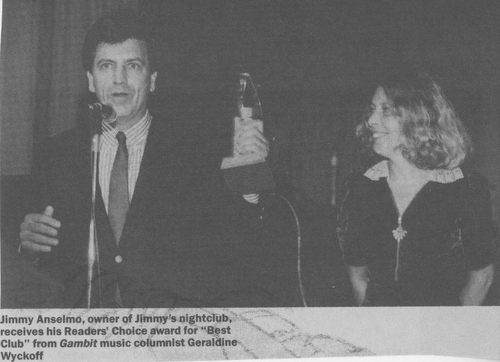
Susan Guidry must have been a disco girl way back then.
Beautiful article my friend. And tonight there are over 3800 members in support of Jimmy’s Music Club.
I see Geraldine Wykoff and Jimmy in some of the pics- Well written, Rex! I have tried to enjoy myself on that corner all these years later, but Carrollton Station is the only one open. I was scared of the FRat House. I hope Jimmy A. Gets the permitting. The City could use the revenue, the neighbors are resigned to having music stop at midnight- which is perfectly acceptable since most of us have to work tomorrow, anyway! Best of luck!
Great piece, so well written and the recollecitions are divine! Thank you !!
Great article. I too am at a loss as to why Susan Guidry is fighting to prevent Jimmy’s from opening. This would be similar to the council preventing Tipitina’s from opening.
Jimmy’s is New Orleans….and across from the streetcar barn is a great location with fewer neighbors than Tips
The headline debunks Guidry’sentire stance and once again proves she is out of touch with Uptown.
This is the same woman who stated that the block of, “Magazine Avenue”, which houses “St. Joes”, Earthsavers, “Hazelnut” and “Mimi’s” (Vera Wang!) was blighted and requires a Walgreens against the entire areas wishes.
Magazine Street ain’t blighted, but you can’t oppose Walgreens while supporting Jimmy’s. None of us like chain businesses that much, but they have a right to set up shop like everyone else.
Naunceling is not opposing Walgreens’ right to open. He’s pointing out the hypocrisy of Susan Guidry claiming to act on behalf of her constituents wishes.
Great article, Rex!
Since there are people of good intensions on both sides, why waste time and money? Sit down with each other and come to a good neighbor agreement, sign it and present it to the council. The longer you bicker the longer and more costly this will become.
Good Neighbor Agreements have worked before on Oak Street…why not go that route?
Any reason not to?
If so what is it?
You have a facility in which to hold a meeting…use it….the faster the better for all.
That’s not how it works. We are supposed to put up another 1000, apply to City Planning which takes another 60 to 90 days before it gets to the point of a good neighbor agreement. We did go to the last neighborhood meeting and they said they did NOT request the moratorium and were willing to work with us. They also said they were going to urge Ms Guidry to work with us quickly and were suggesting 30 days. We are waiting to hear from her. We are scheduled in front of the ABC board March 19th to find out the answer to our appeal for the permit denial so we will see what happens first. We are not just sitting around bickering but are tired of the delays and even more tired of dealing with a moratorium that is illegal in the first place.
There’s no problem with people sitting down to figure out how to be GREAT neighbors. However, these Good Neighbor “Agreements” are hardly that. They are Good Neighbor Permits, because without them you cannot operate and there is nothing in place to cause a give-and-take discussion. An organization with no direct ties to the government (Unless you include Jerry Spier in the conversation!) is essentially given the power to decide economic policy on behalf of the city. It’s their way or the highway.
I’ve seen these Associations in action. They do not come close to representing the majority of their neighborhoods. They are simply those of more means in a given neighborhood, maneuvering themselves into an unchecked position to push their own agenda. I can’t imagine how corruption continues to ween its way into our everyday happenings.
From the dustbin of history,I emerge to say Jimmy is cool ,a straightshooter, good guy and a trustworthy citizen. The powers that be ought to take into account the multi-generational appeal of Jimmy’s Club, as well as the character of its founder.
Ok I confess, I broke the sink off the wall at Jeds but it was an accident. I sat on it and it came off the wall. I knew Jed would have kicked my butt so I never said anything about it.